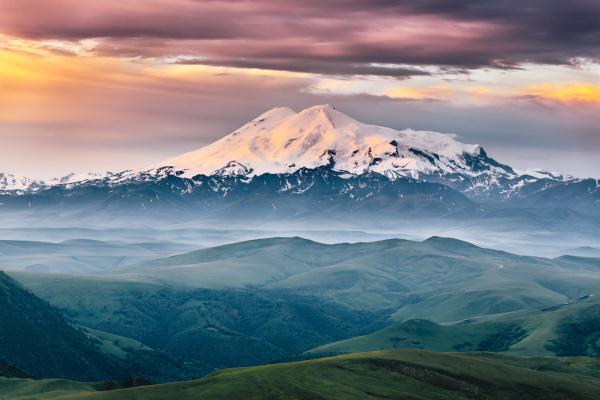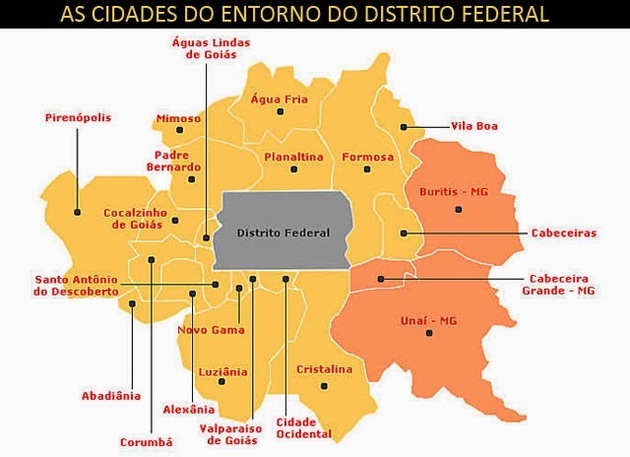THE Russia it is the largest country in the world in terms of land area, located on two continents: Europe and Asia. Despite being one of the most populous nations on the planet, has a low population density. One of the predominant climates in the country is the Humid Continental, with areas where a Polar climate occurs. Its relief is divided between plains and plateaus and home to the highest elevation in Europe: Mount Elbrus. The country is one of the main producers and exporters of oil and natural gas in the world.
Read too: What are the 20 biggest countries in the world?
Russia general data
Nameofficial: Russian Federation
Gentile: russian
Extensionterritorial: 17,098,246 km²
Location: Europe and Asia
capital: Moscow
Climate: Wet Continental and Polar
Government: semi-presidential federal republic
Divisionadministrative:
- 46 provinces (oblast)
- 21 republics
- four autonomous districts (okrugs)
- nine territories (krays)
- two federal cities
- an autonomous province (oblast autonomous)
Language: russian
religions:
- Orthodox: 44.6%
- Unknown: 31%
- Islam: 10.7%
- Non-religious and atheists: 8.2%
- Other Christian religions: 3.6%
- Other religions: 2%
Population: 145,934,000 inhabitants (UN, 2020)
Densitydemographic: 8.9 inhab/km² (UN, 2020)
Human Development Index (HDI): 0,824
Coin: Russian ruble (₽; RUB)
Gross Domestic Product (GDP): US$1.7 trillion (World Bank, 2019)
GDP per capita: $11,584.99
Gini: 0,375
Timezone: 11 time zones in total
External relations:
- brics
- Eurasian Economic Union (UEE)
- Asia-Pacific Economic Cooperation (Apec)
- world Bank
- UN (permanent member of the security advice)
- IMF
- G-20
Do not stop now... There's more after the advertising ;)
Russian history
The occupation of Russian territory was taking place gradually as different peoples settled in the vast area of the country. The annexation of new territories took place mainly from tsarism, which began in the mid-16th century.
This system ended only with the Russian Revolution of 1917. This, in turn, happened at the same time that the conflicts of the First World War, which reverberated in Russian territory in order to accelerate popular revolts. The transformations in the country's political system resulting from the events of 1917 gave origin of the Union of Soviet Socialist Republics (USSR).
With the end of Second World War, the world was immersed in Cold War, a political and ideological conflict between the United States (capitalist bloc) and the Soviet Union (socialist bloc). Internal factors associated with the economy and the political regime hampered the continuity of the USSR, and reforms carried out among the 1980s and 1990s led to the end of the bloc and à Russia's economic reopening.
See too: History of Moscow: foundation and trajectory of Russia's greatest city
Russia map

Russian geography
Russia is the largest country in territorial extension of the world. It has an area of 17,098,246 km² (UN, 2020), which spans two continents: Europe and Asia. With a coastline of 37,653 km, it borders, to the north, with the Arctic Ocean.
The west of Russian territory is on the Europe and borders the following countries:
Norway
Finland
Estonia
Latvia
Belarus
Ukraine
Georgia
Azerbaijan
northwest of Kazakhstan
O oblast of Kaliningrad is also located in Eastern Europe, between the Lithuania and Poland.
The Asian portion of Russian territory, in addition to part of Kazakhstan, borders Mongolia, China and a narrow range of North Korea.
You Ural Mountains act as physical border to the European and Asian continents, separating Russia into east and west.
Climate
Russia's longitudinal extension provides the occurrence of various weather types, which have greater influence from continentality and high latitudes. O Wet continental climate it is predominant in its western portion, marked by mild temperatures and the highest precipitation indices in the country, which vary between 600 mm and 700 mm.
The southeast, influenced by the mountainous relief, is characterized by high thermal amplitude, responsible for very cold winters and hot summers.
Northern Russia is marked by harsh winters, low temperatures most of the year and low rainfall. In these areas the Subarctic and Arctic (or Polar) climates. This is where the region of Siberia is located, where thermometers read down to -43 ºC.
Relief
Russian relief can be compartmentalized into two domains. The first one is the plains, extending from the west to the central lands of the country. One of the exceptions is the mountain range of the Ural Mountains, where the highest elevation reaches the 1895 meter mark. It is also in southwest Russia, Mount Elbrus, the highest elevation in Russia and the highest peak in Europe, with 5642 meters.
In the east, in turn, the relief is crashed, marked by the presence of plateaus. The average altitude of the extensive Russian territory is 600 meters.
Vegetation
An area in the northern portion of Russia is essentially covered by ice, being devoid of vegetation. As one walks to regions with milder temperatures, the landscape changes. The country's vegetation cover is marked by the presence of species characteristic of the biomes Tundra and Taiga. At lower latitudes, there are areas covered by Deciduous Forests.
Hydrography
One of the main rivers in the country is the Volga, also the longest in Europe, with 3530 km. The Lena consists of the longest watercourse in Russia, with 4400 km. Other important rivers that bathe the Russian territory are: Ob, Ienissei, Amur and Don.

Russian Demographics
The population of Russia is 145,934,000 inhabitants, according to UN estimates for 2020, with majority living in the European portion of the country. Although it is one of the largest populations in the world, Russia has a very low demographic density of only 8.9 inhabitants per square kilometer. The Russian population is currently growing at a rate of 0.1% per year.
The capital, Moscow, is the most populous city in Russia, with 12,476,200 inhabitants (UN, 2019). Next is St. Petersburg, with 5.5 million inhabitants. In total, 76.4% of the Russian population live in urban areas.
Russia is made up of people of different nationalities and ethnic groups, being Tatar, Basquires, Chuvaches and Chechens, which together represent 6.8% of the population. Ukrainians account for 1.4%, while those born in Russia make up 77.7% of the population, according to 2010 estimates.
The median age of the population is 40.3 years old, while life expectancy at birth in the country is 72.16 years.
See too: The 20 most populous cities in the world
Russian economy
O Gross Domestic Product (GDP) of Russia is approximately US$1.7 trillion. More than 60% of this value corresponds to the service sector, also the one that concentrates the largest portion of the country's workforce.
O secondary sector represents 32.7% of the Russian GDP. The country's industry is essentially basic, that is, aimed at the development of production goods and raw materials. The Russian extractive industry is a producer of metals, chemical compounds, oil, coal and natural gas. The country also develops transport and communication equipment, vehicles and aircraft.
THE agriculture represents 4.7% of the economy, which is mainly due to the low availability of arable land in the country. Among the main crops are: wheat, barley, oats, sugar beets, sunflower seeds, corn and soybeans.
Russian culture
Russian culture is built on the diversity of ethnic groups that make up the country's population, translating into the variety of languages spoken, religions practiced and cultural manifestations themselves.
One of the highlights of Russian culture is its literature.. The country is home to many renowned authors such as Fyodor Dostoevsky, Leon Tolstoy, Anton Tchékhov and others, whose works are widely known and translated into several languages.
Another artistic exponent of the country is the Bolshoi Ballet, which bears the same name as the great theater located in the capital Moscow. O Mariinski Theater, in St. Petersburg, has equal relevance to the country's artistic and cultural scene. In music, Russia has great classical composers, like Tchaikovsky and Rachmaninoff.
Besides these, there are the famous Russian dolls called matrioshkas, which have become a symbol of Russian cultural tradition.

Russian Infrastructure
Most of the energy produced and consumed in Russia comes from fossil fuels, mainly natural gas. The country's energy matrix is also made up of hydroelectric, nuclear and other sources (wind, solar). 2020 data indicate that the entire population has access to electricity|1|.
In transport, Russia stands out internationally for the number of airports, highways and railways. In 2013, it was the fifth country with the largest number of airports in the world, with 1218. The railway network, with 87,157 km, is the third longest on the planet, only behind the United States and China. The country's road network totals 1,283,387 km.
Russian government
Russia is a semi-presidential federal republic. The country thus has a president and a prime minister, who are, respectively, the head of state and the head of government.
THE russian assembly it is the main organ of the Legislative Power of the country, being composed by two chambers: Duma (lower chamber) and Federation Council (upper chamber).
Russian flag

Curiosities about Russia
The first artificial satellite to be launched into space was the Soviet Sputnik 1. Its launch took place on October 4, 1957.
The city of Yakutsk, in the northeast of the country, is known as the coldest city in the world. The lowest temperature ever recorded was -63.8 ºC, while the winter average is around -40 ºC.
In Russia, on the border with Mongolia, the oldest and deepest lake in the world: Lake Baikal, 1700 meters deep and approximately 25 million years old.
The Trans-Siberian is the longest railway in the world. The route between Moscow and Vladivostok is 9288 km, being covered in seven or eight days.
Note
|1| The World Fact book – CIA. Russia. Available at: <https://www.cia.gov/the-world-factbook/countries/russia/>. Accessed on Feb 26 2021.
By Paloma Guitarrara
Geography teacher

